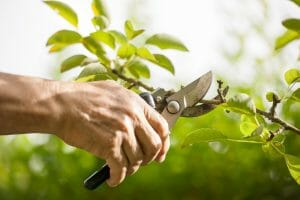While many people believe that fall is the perfect time of the year to prune trees, the truth is that other times of the year may be far better for the health of the tree. Pruning your trees in the fall could damage or even kill mature trees.
 It is tempting to look at your trees and see the dead or otherwise unruly branches when the leaves begin falling, with some limbs looking dangerous. However, it is during the fall that trees are preparing for their dormant period, and even branches that may appear dead could be storing nutrients and other things necessary for the tree to survive the winter.
It is tempting to look at your trees and see the dead or otherwise unruly branches when the leaves begin falling, with some limbs looking dangerous. However, it is during the fall that trees are preparing for their dormant period, and even branches that may appear dead could be storing nutrients and other things necessary for the tree to survive the winter.
While it’s possible to trim trees year-round, it is highly recommended that you consult with a certified arborist, like those at the Ohio Valley Group, before doing any significant pruning to your trees. You’ll want to make sure that your precious trees are taken care of appropriately, in ways that not only keep them healthy but help them to flourish.
It’s also important to note that when it comes to pruning trees, one size does not fit all. Many homeowners don’t know the different kinds of trees that are on their property. Every different kind has different needs for staying healthy, and each has a different timeline when it comes to pruning.
How do I know what trees to prune and when?
The first, most critical step is to take an inventory of all the trees on your property. Make a list, and if you find a tree you can’t identify, do some research online to find out. Many different sites can help you figure out what kinds of trees you are dealing with. The local Cooperative Extension Service in your area is also a great source for free advice. Many have a certified arborist on staff, and their expertise in identifying trees can be invaluable.
Once you have a solid understanding of the types of trees you are caring for, you can create a pruning schedule. The purpose of most routine pruning is to remove weak, dead, or diseased branches. If it is only a small amount that needs to be cut away, you should be fine pruning at any time of the year without causing long term damage to the tree. As a general rule, wound closure and growth are heightened when you prune in the late winter, before the spring growth spurt.
Take care in pruning, however, since the wounds from pruning can spread disease, and every cut can change the way a tree grows. If there isn’t a clear need to prune, experts recommend you wait until it is necessary.
For deciduous trees or trees that lose their leaves every year, you should consider pruning in early winter. Once they’ve fully entered their dormancy, it is far easier to see the structure or framework and most insects have left for the season. Flowering trees, however, are best pruned after blooming. While routing pruning of dying or dead branches can be done at any time, if you wait to do more significant pruning post-blooming you will encourage healthier and better growth.
What about young or new trees?
It is critical in the early years of a tree’s life to shape it in the right direction. You can develop a great shape and strong tree with proper trimming. If they get the right amount of pruning as youngsters, trees will need far less trimming as they grow older.
By taking care of your trees properly from the very start, you could save yourself both time and money in the long run, as well as have beautiful trees that not only make for great shade but also significantly increase your property value.
What should I keep in mind when it comes to tree pruning?
There are several things you should do to keep your trees healthy and thriving. First, inspect annually for pruning needs. If you have a plan that covers the year, you can account for the needs or different trees at different times. Second, creating a routine will help your trees flourish, keeping them safe and aesthetically pleasing without the need for invasive pruning. Waiting until a limb is large to prune means a bigger wound, which means more of a chance for disease, insects, and rot.
Also, don’t try to chop off the treetops as a way to reduce their size. There is no substitute for proper tree placement and selection. Topping your trees can be catastrophic.
Finally, seek expert advice! The certified arborists at the Ohio Valley Group can help you get on the right schedule, and our professional tree technicians can perform both routine and more extensive pruning safely. Taking care of your trees is one of the most important factors in keeping the curb appeal of your home great. Give us a call and get your trees back into beautiful shape!
